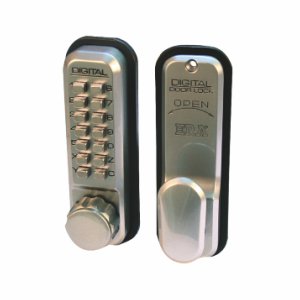Securing your home with access control systems
Protecting a residential building is one of the most important things in our lives. Safeguarding our family is our most basic duty, but we also want to protect a building we have invested heavily in and we want to keep our valuable possessions safe and the fabric and décor of a building protected from damage. As a commercial business, we may also be responsible for a residential complex, such as a healthcare facility, care home or student accommodation block, so residential security is a complex and challenging area to consider.
The challenges of residential security
A commercial business and a more affluent family may invest in CCTV technology to provide comprehensive visibility of a property and its surroundings, and most residential buildings also have an intruder alarm. But access control systems are increasingly being installed to provide the most effective security solution for a residential property.
The major challenge of residential security is that multiple people are using an access control system. With a family home, in most cases this should be relatively easy to manage, but in a student complex, for example, this could involve hundreds of different people and is therefore a much more demanding proposition. Also, the more people who need access to a building, the wider range of skills and abilities you need to consider. So you have to find an access method that suits everybody and can be adopted with minimal trouble and maximum effectiveness.
Typical components of a residential access control system
For many years a simple lock and key has been used as a means of accessing a residential property. However, this is a traditional method which is gradually retreating from common use. A key is a physical item which can be lost or copied or forgotten, it is also an item which can become worn, as can the locking mechanism it engages with. But perhaps the most important element of a traditional key is that, as a physical item, it has one function and one function only, when in the 21st century we have greater demands and expect more from technologies we use every day.
Wireless access control systems involve no electrical installation and are therefore quicker and cheaper to install, but they also provide multiple functions. Many access control systems for residential properties are now keyless and wireless, and hence you have options including:
- Keypads – A mechanical or digital keypad can be used for access, with the user inputting a unique code or PIN, which can be changed if a security breach is found.
- Audio/video – Where access of a gated property is required, or even for some front doors, an audio/video system can be used to grant access. This doesn’t always need to be a manned property in order to check authorisation and allow access, this could be managed remotely.
- Card/fob – Using RF (radio frequency) technology, a proximity sensor can read a card or fob which is swiped close to a reader and this can disengage the door lock to allow access.
- Smart locks – Using NFC or Bluetooth technology, a smartphone can operate an access control system.
- Biometric features – A user can present a biometric feature to gain entry, such as face, fingerprint or eyeball recognition.
A family or residential property owner can choose the type of system that best suits the needs of the property, in terms of the number of users, the frequency of people coming and going, the size of the property and how many access points there are, and the specific security risks of the property and its location.
The benefits of a wireless access control system for a residential property
- Convenience – A user can very quickly gain access to the property as and when required, and the method used can be the one that best suits the people involved. This can avoid the issue of someone leaving home without a key, or leaving the door unlocked. A system can be set-up so that a door is automatically locked after a specified period of time, so you never need to worry about a door being left unlocked.
- Remote access – Most wireless access control systems can be monitored remotely, so you can lock the door when at work and allow/revoke access as required when not at home.
- Temporary access – You can grant temporary access to visitors or contractors for when no one is at home. So if a trusted friend or family member is visiting, or a plumber is coming to fix the boiler, you can grant temporary access which is only valid between specific hours.
- Visibility – You can receive notifications when someone has entered the home, and can therefore check whether this is authorised or not authorised. You have an audit trail for when locks have been activated, so can identify when someone entered or left the home and who it was.
- Security – There are various systems in place to ensure security cannot be bypassed, such as encryption protocols, multi-step authentication and software updates.
- Integrate – You can link a wireless access control system to other smart devices in the home, such as CCTV, intruder alarms, doorbells, heating and lighting and smart speakers.
- Deterrent – A wireless access control system usually has a physical and visible presence which can deter potential thieves and trespassers. They will see a system installed and instantly know that enhanced and effective security systems are in place.
Residential security is one of the most important things we manage every day, so don’t take a chance on anything and check out our range of access control systems at MB Direct, and order online today.